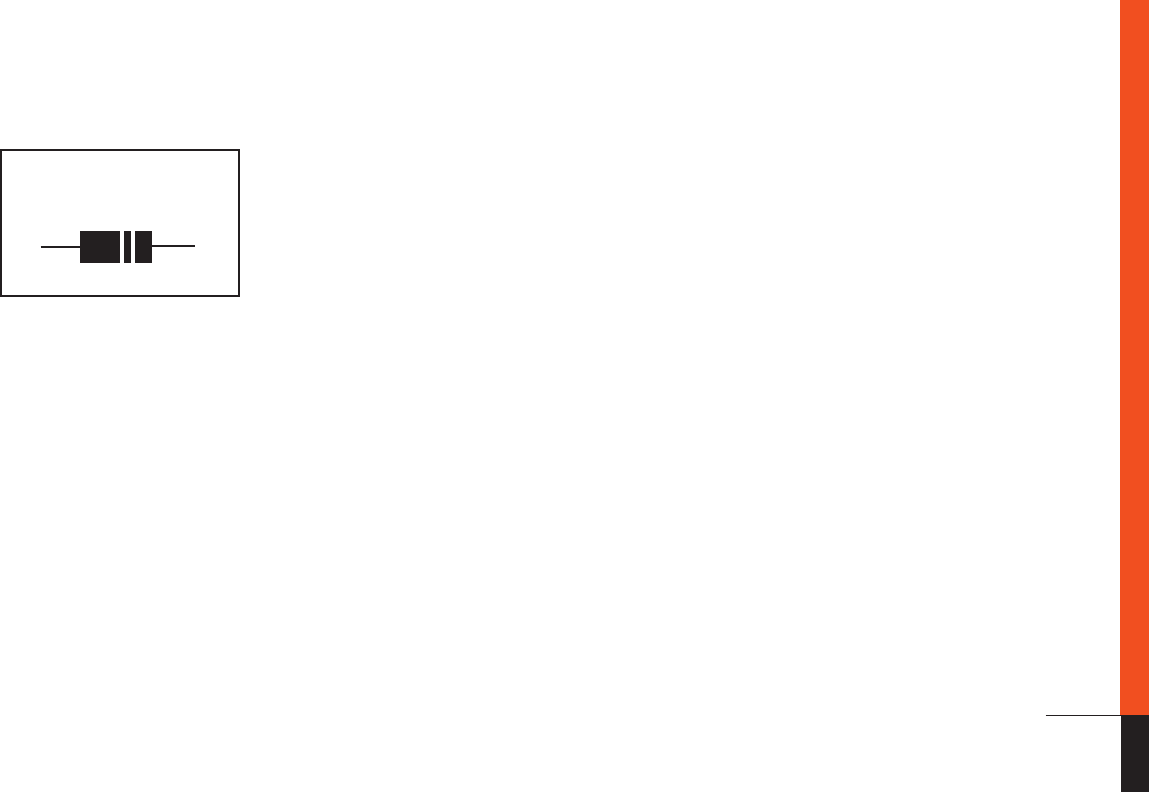
5
4. In some systems it may be desirable
to have two sources play simultane-
ously through the audio system. For
instance, if you have a factory-installed
radio in your car and you want to add
an aftermarket CD player, you may
connect the CD player to the RCA
inputs of the amp and the factory radio
to the Universal Interface speaker
inputs. (Note: Front and rear channels
of the CD and radio must be driven
into the front and rear inputs of the
amplifier. Use Y adapters if necessary.)
The Universal Interface circuitry will
isolate the two signals from each other
while allowing them to drive the amp
simultaneously. Therefore, switching
from one source to the other is as sim-
ple as turning the unused source off,
and the other on. (Note: you must con-
nect the remote turn-on wire from the
CD player to the Rem terminal on the
amp. Install a diode in the remote line
from the CD player as shown in the
diagram above.)
System Setup and Adjustment
Electronic Crossover
The electronic crossover in the P-4020 and
P-4040 should be used to route the appro-
priate signal to speakers intended to play
only bass, or only midrange and treble fre-
quencies. The crossover slope is 12dB/oct
and the frequency is fixed at 80Hz.
Pre-amp Outputs
Connect these to the input connectors of
other amplifiers or processors in your
system. Refer to the “Applications” sec-
tion for system expansion possibilities.
Setting Input Sensitivity
Proper input-sensitivity control settings
on Power Series amplifiers are critical to
ensure optimum performance, low noise
levels and maximum system reliability.
As a general rule, controls at the front
end of a system (source, equalizers and
other processors) should be set as high
as possible with the amplifier input sensi-
tivity set as low as possible while still
providing adequate volume levels. Using
a high signal level and a low-sensitivity
setting will help keep background noise
in the system to a minimum.
Initially, turn the input sensitivity GAIN
control to its minimum (counterclock-
wise) position.
1. Reconnect the (–) negative lead to your
vehicle’s battery. Apply power to the
audio system and play a favorite music
track from CD or tape. (Note: After the
source unit is on, the JBL badge (on the
top panel) will illuminate, indicating the
amplifier is on. If not, check the wiring,
especially the remote connection from
the source unit. Also refer to “Trouble-
shooting” on page 7.)
2. On the source unit, increase the volume
control until it is approximately 3/4 of
its maximum output level. Slowly
increase the Input Sensitivity control
(clockwise) toward three o’clock and,
at the same time, listen to the quality
of the reproduced sound. At some
point, you’ll hear distortion on the
music peaks. Stop the adjustment and
turn it back slightly. This is the maxi-
mum undistorted output level of your
system, and it should not be exceeded
during use.
3. After adjusting the level of the main
speakers in your system, you should
adjust the remaining channels (if you
are using a P-4040 or a multi-amp
system) for the desired system bal-
ance. You’ll find this easiest to do by
adjusting the channels in the following
order: 1) front speakers, 2) rear speak-
ers, 3) subwoofer. Elaborate, multi-
channel systems may be complex to
adjust. Your local JBL installation spe-
cialist is the best person to help with
such an adjustment.
Applications
For your convenience, we’ve included
several application diagrams to help you
plan your own system installation.
Figures 1 through 3 show how to config-
ure the JBL P-4020 or P-4040 for stereo,
bridged-mono and tri-mode operation.
For system expansion ideas, see Figures
4 and 5 on the next page. (Note: For sim-
plicity, Figures 1 through 5 do not show
power, remote and input connections.)
Many different system configurations are
possible using the crossovers and pre-
amp outputs featured in Power Series
amplifiers. If you are considering expand-
ing your system beyond what is shown
here, please consult your local JBL instal-
lation specialist, who is experienced in
designing complex mobile-audio systems.
From
Source
Unit
To
Amp
IN4001 Diode
P-4020/4040 OM. 7/14/98 11:42 AM Page 5










